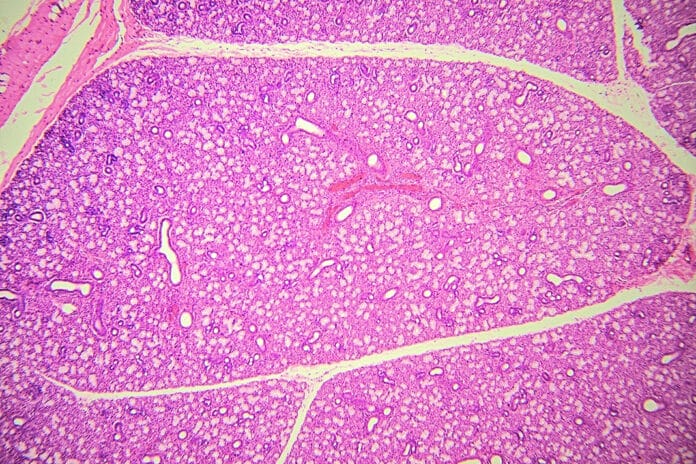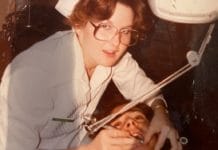Ionocyte Cells
New discoveries about the human body are amazing, and they become more fascinating when it applies to dental professionals’ specific areas of interest ‒ the head and neck. I have had the privilege of writing two previous articles announcing the newly identified masseter muscle layer and the identification of the tubarial salivary glands. So I’m excited to write yet another one announcing a new discovery of ionocyte cells in salivary glands.
Many of you likely have never heard of an ionocyte cell. To explain, ionocyte cells are quite ancient as they have been noted in the gills of fish and crustaceans as well as frogs’ skin for some time, but they recently have been found in mice and humans. You may not have heard of an ionocyte cell because it’s a newly identified cell, and it was considered “rare” in humans upon its identification.
The ionocyte cell was first identified in 2018 as a rare cell associated with the human airway.1,2 These cells were dubbed pulmonary ionocytes as they were originally thought to be exclusively lung cells. The significance of this discovery is that the dysfunction of this cell seems to contribute or possibly be a causal link to cystic fibrosis. The discovery of this cell has opened doors for new treatments and possibly a cure for cystic fibrosis.
Another Location of Ionocyte Cells: Salivary Glands
In April 2022, ionocyte cells were discovered in salivary glands.3 The importance of these cells in salivary glands is still being investigated. However, scientists found that the ionocyte cells help maintain healthy levels of potassium, calcium, chlorine, and other electrolytes that help with saliva’s buffering capacity. This is quite relevant as we know saliva’s buffering capacity plays a role in caries risk and dental disease.4
The scientists determined that ionocytes found in salivary glands excrete fibroblast growth factor 10 (FGF-10), an important signaling molecule in the development of the salivary glands, among other organs.5 This function of the ionocyte cell is important as it could lead to a better understanding of salivary gland damage and repair.
Could you imagine a world where patients who need head and neck radiation can have their salivary glands repaired to improve or simply allow some level of function? It would be a game changer on so many levels, including patients’ quality of life as well as reduced risk of dental disease.
Additionally, dysregulation of FGF-10 is linked to multiple diseases ‒ including atresia, aplasia, and hypoplasia of the salivary glands ‒ contributing to oral inflammation, dental erosion, dental caries, and xerostomia. This highlights the possible importance of functional ionocytes as a key player in oral health and disease. Overexpression of FGF-10 can also cause cancer as it plays an essential role in cell proliferation and differentiation, among other factors.6
Therefore, proper production of FGF-10 is vital to tissue homeostasis and plays a role in oral and systemic health.
New discoveries in biology, biochemistry, and anatomy and physiology push medical science forward in ways unimaginable 50 years ago. This new discovery aims to possibly cure cystic fibrosis while also lending to further research and possible treatments to improve salivary gland function after damage. Though the progression may take time, the knowledge is ever growing.
These recent discoveries highlight why science will never stay static and why recommendations and understanding of diseases constantly change. The more we learn, the better we can manage disease, both systemic and oral. In my opinion, there has never been a more exciting time to be a healthcare professional. Diseases that would have certainly shortened lives are being managed in ways never imagined before.
Before you leave, check out the Today’s RDH self-study CE courses. All courses are peer-reviewed and non-sponsored to focus solely on high-quality education. Click here now.
Listen to the Today’s RDH Dental Hygiene Podcast Below:
Ionocyte Cells References
- Plasschaert, L.W., Zilionis, R., Choo-Wing, R., et al. (2018, August 1). A Single-cell Atlas of the Airway Epithelium Reveals the CFTR-rich Pulmonary Ionocyte. Nature. doi: 10.1038/s41586-018-0394-6. https://www.nature.com/articles/s41586-018-0394-6
- Montoro, D.T., Haber, A.L., Biton, M., et al. (2018, August 1). A Revised Airway Epithelial Hierarchy includes CFTR-expressing Ionocytes. Nature. doi: 10.1038/s41586-018-0393-7. https://www.nature.com/articles/s41586-018-0393-7
- Mauduit, O., Aure, M.H., Delcroix, V., et al. A Mesenchymal to Epithelial Switch in Fgf10 Expression Specifies an Evolutionary-conserved Population of Ionocytes in Salivary Glands. Cell Rep. 2022; 39(2): 110663. doi:10.1016/j.celrep.2022.110663. https://www.cell.com/cell-reports/pdfExtended/S2211-1247(22)00415-6
- Malekipour, M., Messripour, M., Shirani, F. Buffering Capacity of Saliva in Patients with Active Dental Caries. Asian Journal of Biochemistry. 2008; 3(5): 280-283. 10.3923/ajb.2008.280.283. https://www.researchgate.net/publication/247913958_Buffering_Capacity_of_Saliva_in_Patients_with_Active_Dental_Caries
- Watson, J., Francavilla, C. Regulation of FGF10 Signaling in Development and Disease. Front Genet. 2018; 9: 500. doi:10.3389/fgene.2018.00500. https://pubmed.ncbi.nlm.nih.gov/30405705/
- Qazvini, F.F. Significant Functions of Fibroblast Growth Factor-10: A Narrative Review. Cambridge Medicine Journal. 2019. https://cambridgemedicine.org/doi/cmj.2019.07.001











